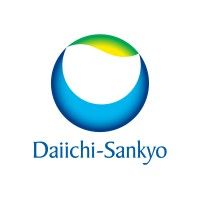预约演示
更新于:2025-05-07
Acute pharyngitis
急性咽炎
更新于:2025-05-07
基本信息
别名 Acute Pharyngitis、Acute pharyngitis、Acute pharyngitis (disorder) + [12] |
简介 An acute and painful inflammatory process that affects the pharynx. It is usually caused by viruses and less often bacteria. Signs and symptoms include discomfort on swallowing, low-grade fever, headache, and earache. |
关联
28
项与 急性咽炎 相关的药物靶点- |
作用机制- |
原研机构 |
在研适应症 |
非在研适应症 |
最高研发阶段批准上市 |
首次获批国家/地区 中国 |
首次获批日期2020-04-27 |
作用机制 Bacterial DNA gyrase 抑制剂 [+1] |
在研机构 |
最高研发阶段批准上市 |
首次获批国家/地区 日本 |
首次获批日期2008-01-25 |
201
项与 急性咽炎 相关的临床试验NCT06932328
A Randomized, Double-Blind, Dose-Exploration, Multicenter Phase II Clinical Trial to Evaluate the Efficacy and Safety of Qin Qiao Yan Shu Granules in the Treatment of Acute Pharyngitis (Exterior Wind-Heat Syndrome)
Trial Objectives and Exploration Indicators:
1. To explore the improvement effect of different doses of Qinqiao Yanshu Granules on the symptoms/conditions and TCM syndromes of acute pharyngitis (Wind - Heat Exogenous Syndrome), and its effect on shortening the course of the disease.
2. To observe the safety of the clinical application of Qinqiao Yanshu Granules. Overall Trial Design:A block - randomized, double - blind, dose - escalation, multicenter clinical trial design was adopted.
Sample Size:It is planned to enroll 72 cases in each group (high - dose group, low - dose group, and extremely low - dose group), with a total of 216 cases.
Investigational Products:Experimental groups:
1. High - dose group: Specification: 12g/bag;
2. Low - dose group: Specification: 12g/bag.
Control group:
(1) Extremely low - dose group: Specification: 12g/bag.
Rescue medication:
(1) Paracetamol tablets: Specification: 0.5g/tablet. Dosage and Administration: High - dose group: Dissolve in boiling water and take 1 bag each time, 3 times a day, half an hour before meals; Low - dose group: Dissolve in boiling water and take 1 bag each time, 3 times a day, half an hour before meals; Extremely low - dose group: Dissolve in boiling water and take 1 bag each time, 3 times a day, half an hour before meals; Rescue medication: Paracetamol tablets. During the trial, if the subject's body temperature exceeds 38.5°C (including 38.5°C), rescue medication can be added. Use it according to the instructions and doctor's advice and record it truthfully.
Treatment Course:5 days Efficacy Indicators:
1) The disappearance rate of pharyngeal pain 3 days and 5 days after treatment; 2) The change value of the pharyngeal pain VAS score compared with the baseline 5 days after treatment; 3) The time to disappearance of pharyngeal pain; 4) The effective rate of pharyngeal signs 5 days after treatment; 5) The clinical cure rate of the disease 5 days after treatment; 6) The efficacy of TCM syndromes 5 days after treatment; 7) The disappearance rate of single symptoms 5 days after treatment; 8) The frequency of rescue drug use. Measurement and Definition of Endpoint Indicators:
1. The criterion for the disappearance of pharyngeal pain: The pharyngeal pain VAS score drops to 0 points and persists for 24 hours or more.
2. Pharyngeal pain VAS score:
Starting from the evaluation time of the VAS score during the screening period, the subject evaluates once every 24 hours (±1 hour) and records the most severe degree of pharyngeal pain in the past 24 hours in the diary card.
3. The criterion for the effective rate of pharyngeal signs: "Effective" is defined as a decrease of at least 1 point in the pharyngeal sign score. The effective rate = (Number of effective cases / Total number of cases) × 100%.
4. The criterion for the clinical cure of the disease: The clinical symptoms of the disease disappear, and the pharyngeal signs are reduced to mild or less. The cure rate = (Number of cured cases / Total number of cases) × 100%.
5. The definition of the efficacy of TCM syndromes:
Efficacy of TCM syndromes: Cure means that the TCM syndrome score decreases by ≥ 95%; Marked effect means that the TCM syndrome score decreases by ≥ 70% and < 95%; Effective means that the TCM syndrome score decreases by ≥ 30% and < 70%; Ineffective means that it does not meet the above criteria.
The change value of the pharyngeal pain VAS score compared with the baseline = The baseline pharyngeal pain VAS score - The pharyngeal pain VAS score on the 6th day.
Study Population;
Inclusion criteria:
1. Meeting the Western medical diagnostic criteria for acute pharyngitis;
2. Meeting the TCM syndrome differentiation criteria for Wind - Heat Exogenous Syndrome;
3. The course of the disease at the time of consultation ≤ 48 hours;
4. The pharyngeal pain VAS score ≥ 4 points and the pharyngeal sign score ≥ 1 point;
5. Aged between 18 and 65 years old (including the boundary values), regardless of gender;
6. Voluntarily participating in this clinical trial and signing the informed consent form.
Exclusion criteria:
1. Those with pharyngeal symptoms or inflammation caused by measles, scarlet fever, agranulocytosis, infectious mononucleosis, influenza, diphtheria, acute epiglottitis, acute carotid arteritis, etc.;
2. Those with concurrent acute sinusitis, acute laryngitis, suppurative tonsillitis, bronchitis, pneumonia;
3. Those with a modified Centor score ≥ 2, a body temperature peak > 38.5°C (axillary temperature) within 24 hours before this visit, a white blood cell count > 1.2 × ULN, a neutrophil percentage > 1.2 × ULN, and considered to be bacterial infections by the researcher;
4. Those with concurrent severe primary diseases of the cardiovascular and cerebrovascular system, liver, kidney, hematopoietic system, endocrine system, and mental diseases;
5. Those with a history of thyroid - related diseases such as hyperthyroidism and hypothyroidism;
6. Those with laboratory test results
1. To explore the improvement effect of different doses of Qinqiao Yanshu Granules on the symptoms/conditions and TCM syndromes of acute pharyngitis (Wind - Heat Exogenous Syndrome), and its effect on shortening the course of the disease.
2. To observe the safety of the clinical application of Qinqiao Yanshu Granules. Overall Trial Design:A block - randomized, double - blind, dose - escalation, multicenter clinical trial design was adopted.
Sample Size:It is planned to enroll 72 cases in each group (high - dose group, low - dose group, and extremely low - dose group), with a total of 216 cases.
Investigational Products:Experimental groups:
1. High - dose group: Specification: 12g/bag;
2. Low - dose group: Specification: 12g/bag.
Control group:
(1) Extremely low - dose group: Specification: 12g/bag.
Rescue medication:
(1) Paracetamol tablets: Specification: 0.5g/tablet. Dosage and Administration: High - dose group: Dissolve in boiling water and take 1 bag each time, 3 times a day, half an hour before meals; Low - dose group: Dissolve in boiling water and take 1 bag each time, 3 times a day, half an hour before meals; Extremely low - dose group: Dissolve in boiling water and take 1 bag each time, 3 times a day, half an hour before meals; Rescue medication: Paracetamol tablets. During the trial, if the subject's body temperature exceeds 38.5°C (including 38.5°C), rescue medication can be added. Use it according to the instructions and doctor's advice and record it truthfully.
Treatment Course:5 days Efficacy Indicators:
1) The disappearance rate of pharyngeal pain 3 days and 5 days after treatment; 2) The change value of the pharyngeal pain VAS score compared with the baseline 5 days after treatment; 3) The time to disappearance of pharyngeal pain; 4) The effective rate of pharyngeal signs 5 days after treatment; 5) The clinical cure rate of the disease 5 days after treatment; 6) The efficacy of TCM syndromes 5 days after treatment; 7) The disappearance rate of single symptoms 5 days after treatment; 8) The frequency of rescue drug use. Measurement and Definition of Endpoint Indicators:
1. The criterion for the disappearance of pharyngeal pain: The pharyngeal pain VAS score drops to 0 points and persists for 24 hours or more.
2. Pharyngeal pain VAS score:
Starting from the evaluation time of the VAS score during the screening period, the subject evaluates once every 24 hours (±1 hour) and records the most severe degree of pharyngeal pain in the past 24 hours in the diary card.
3. The criterion for the effective rate of pharyngeal signs: "Effective" is defined as a decrease of at least 1 point in the pharyngeal sign score. The effective rate = (Number of effective cases / Total number of cases) × 100%.
4. The criterion for the clinical cure of the disease: The clinical symptoms of the disease disappear, and the pharyngeal signs are reduced to mild or less. The cure rate = (Number of cured cases / Total number of cases) × 100%.
5. The definition of the efficacy of TCM syndromes:
Efficacy of TCM syndromes: Cure means that the TCM syndrome score decreases by ≥ 95%; Marked effect means that the TCM syndrome score decreases by ≥ 70% and < 95%; Effective means that the TCM syndrome score decreases by ≥ 30% and < 70%; Ineffective means that it does not meet the above criteria.
The change value of the pharyngeal pain VAS score compared with the baseline = The baseline pharyngeal pain VAS score - The pharyngeal pain VAS score on the 6th day.
Study Population;
Inclusion criteria:
1. Meeting the Western medical diagnostic criteria for acute pharyngitis;
2. Meeting the TCM syndrome differentiation criteria for Wind - Heat Exogenous Syndrome;
3. The course of the disease at the time of consultation ≤ 48 hours;
4. The pharyngeal pain VAS score ≥ 4 points and the pharyngeal sign score ≥ 1 point;
5. Aged between 18 and 65 years old (including the boundary values), regardless of gender;
6. Voluntarily participating in this clinical trial and signing the informed consent form.
Exclusion criteria:
1. Those with pharyngeal symptoms or inflammation caused by measles, scarlet fever, agranulocytosis, infectious mononucleosis, influenza, diphtheria, acute epiglottitis, acute carotid arteritis, etc.;
2. Those with concurrent acute sinusitis, acute laryngitis, suppurative tonsillitis, bronchitis, pneumonia;
3. Those with a modified Centor score ≥ 2, a body temperature peak > 38.5°C (axillary temperature) within 24 hours before this visit, a white blood cell count > 1.2 × ULN, a neutrophil percentage > 1.2 × ULN, and considered to be bacterial infections by the researcher;
4. Those with concurrent severe primary diseases of the cardiovascular and cerebrovascular system, liver, kidney, hematopoietic system, endocrine system, and mental diseases;
5. Those with a history of thyroid - related diseases such as hyperthyroidism and hypothyroidism;
6. Those with laboratory test results
开始日期2025-03-26 |
申办/合作机构 |
CTR20244514
评价芩翘咽舒颗粒治疗急性咽炎(外感风热证)有效性和安全性的随机、双盲、剂量探索、多中心II期临床试验
探索不同剂量芩翘咽舒颗粒对急性咽炎(外感风热证)的症状/病情和中医证候的改善作用、缩短病程作用。观察芩翘咽舒颗粒临床应用的安全性。
开始日期2025-03-26 |
申办/合作机构 南京海陵中药制药工艺技术研究有限公司 [+1] |
CTR20250509
阿奇霉素分散片在空腹及餐后条件下的人体生物等效性试验
考察健康受试者在空腹及餐后条件下,单次口服1片浙江贝得药业有限公司生产的阿奇霉素分散片(受试制剂T,规格:0.25g)与相同条件下单次口服1片由Teva Nederland B.V.持证的阿奇霉素片(参比制剂R,商品名:Azitromycin 250mg TEVA,规格:0.25g)的药动学特征,评价两制剂间的生物等效性及安全性。
开始日期2025-02-24 |
申办/合作机构 |
100 项与 急性咽炎 相关的临床结果
登录后查看更多信息
100 项与 急性咽炎 相关的转化医学
登录后查看更多信息
0 项与 急性咽炎 相关的专利(医药)
登录后查看更多信息
839
项与 急性咽炎 相关的文献(医药)2025-04-01·Phytomedicine
The effect of Yinhuang Hanhua dropping pill on acute pharyngitis via a systematic “Compound-Target-Pathway” analysis
Article
作者: Zhao, Qing ; Li, Herong ; Liu, Ting ; Wen, Jian ; He, Yan ; Jin, Yang ; Chen, Jiyu ; Zhang, Ming ; Liu, Wen ; Shu, Wanfen ; Chen, Shuaishuai ; Wang, Xiaohuan ; Wu, Tiantai ; Zhang, Jianfeng
2025-03-11·ACS Omega
Development of the CRISPR-Cas12a-Based Biosensing System for Rapid, Ultrasensitive, and Highly Specific Detection of Streptococcus pyogenes
Article
作者: Zhou, Lin ; Xiao, Fei ; Ma, Lijuan ; Jia, Xinbei ; Tai, Jun ; Wang, Yi ; Zhou, Juan ; Zhang, Yiqin
2025-02-01·Carbohydrate Polymers
The structural discrepancy between the ability of fructan and arabinogalactan to cure acute pharyngitis in Hosta plantaginea (Lam.) Aschers flowers
Article
作者: Bai, Laxinamujila ; Liddle, Matthew ; Zhao, Yuping ; Hou, Xiaorong ; Xiao, Xiaohe ; Pan, Sirigunqiqige ; Li, Yuhui ; Li, Huifang ; Bai, Tiankai ; Bao, Shuguang ; Wang, Huan
62
项与 急性咽炎 相关的新闻(医药)2025-04-27
·华森制药
春季气温波动大、空气干燥,加之花粉、尘螨等过敏原增多,咽喉作为呼吸道的“门户”,容易受到刺激。据统计,约40%的人群在春季会出现不同程度的咽喉干痒、疼痛或异物感。了解诱因并科学防护,是缓解不适的关键。气候干燥与温差刺激。春季风大、湿度低,呼吸道黏膜水分易蒸发,导致咽喉干涩充血。早晚温差可达10℃以上,冷热交替易引发黏膜血管收缩异常,降低局部免疫力。建议外出佩戴口罩,保持咽喉湿润,避免长时间暴露在冷空气中。过敏原的“隐形攻击”。花粉、柳絮等过敏原在春季浓度飙升,可能引发过敏性咽炎。患者常伴有打喷嚏、眼痒等症状。过敏体质者需关注天气预报中的花粉指数,外出后及时清洁鼻腔和口腔,必要时遵医嘱使用抗组胺药物。日常防护四步法:补水润喉:每日饮水不少于1.5升,可饮用蜂蜜柠檬水或含服润喉糖;环境加湿:室内湿度保持在50%-60%,使用加湿器或悬挂湿毛巾;饮食调节:少食辛辣油炸食物,多摄入梨、银耳等滋阴食材;声带保养:避免长时间高声说话,教师、主播等职业人群建议每小时休息10分钟。如果出现咽喉不适,华森制药甘桔冰梅片源自经典喉科名方,由桔梗、薄荷、射干、青果、冰片、蝉蜕、乌梅、甘草共八味药物组方而成,具有清热开音的功效,用于风热犯肺引起的失音声哑及急性咽炎出现的咽痛、咽干灼热、咽粘膜充血等。若咽喉肿痛持续超1周,伴随发热、吞咽困难或呼吸不畅,可能提示细菌感染或扁桃体化脓,需及时就诊。春季也是流感高发期,早诊断早治疗可避免并发症。
放射疗法
2025-04-21
·华森制药
2025年4月18日~20日,广东省医院协会耳鼻咽喉头颈外科专业委员会成立大会在广东省广州市隆重召开。本次会议由广东省医院协会主办,中山大学孙逸仙纪念医院耳鼻喉科、国家耳鼻咽喉疾病临床医学研究中心广东省分中心联合承办。本次会议汇聚全国耳鼻咽喉、头颈外科领域权威专家、临床医师及科研学者,围绕中西医结合诊疗、微创技术创新、基层医疗能力提升等议题展开深度研讨。据介绍,本次大会围绕耳鼻咽喉科、头颈外科疾病诊疗中的新理念、新技术和新方法进行深入探讨。大会了邀请国内外知名专家、学者分享了专科分会场、专题报告、学术讲座、病例讨论、手术演示等一系列丰富多彩的学术交流活动。期间,中山大学孙逸仙纪念医院耳鼻喉科杨海弟教授、山东大学齐鲁医院耳鼻喉科雷大鹏教授等专家,围绕“听觉干预与中枢认识改变”、“下咽癌治疗策略选择”等主题作学术分享,为与会者呈现了一场高水平的学术盛宴。首都医科大学附属北京同仁医院黄志刚教授作《头颈外科新技术发展趋势》学术报告University Hospital Essen, Sven Brandau教授作《Myeloid Cell lmmunology in Head and Neck Cancer》学术报告中国人民解放军总医院第一医学中心韩东一教授作《听神经瘤手术的听力保存及重建策略》学术报告中国医学科学院北京协和医院高志强教授作《LATERAL SKULL BASE SURGERY SYSTEM: ESTABLISHMENT AND PRACTICE》学术报告中山大学附属第一医院文卫平教授作《头颈恶性肿瘤的早筛早诊的临床进展》学术报告中山大学孙逸仙纪念医院黄晓明教授作《机器人甲状腺外科手术发展》学术报告华森制药携中成药甘桔冰梅片亮相盛会,通过学术分享、展台交流等形式深度参与,助力咽喉疾病诊疗水平提升。甘桔冰梅片为耳鼻喉专科特色产品,由甘草、桔梗、冰片、乌梅等八味中药组成,对症咽干、咽痛、失音声哑、急性咽炎等咽喉不适。先后被纳入多项临床诊疗指南/专家共识推荐用药,并入选国家《100个基于评价证据疗效独特的中药品种》。
2025-04-16
·米内网
精彩内容近日,国家药品不良反应监测中心(CDR)发布公示,十一味参芪片和金莲花润喉片拟转换为非处方药。其中,十一味参芪片为补气补血中成药,金莲花润喉片为五官科中成药,米内网数据显示,上述两大品类2024年在零售药店(城市实体药店+网上药店)终端销售规模分别超150亿元和80亿元。来源:CDR官网十一味参芪片为吉林金恒制药的独家补气补血中成药,具有补脾益气的功效,用于脾气虚所致的体弱、四肢无力,目前已纳入全国医保乙类药目录。米内网数据显示,2019-2023年该药在中国三大终端六大市场(统计范围详见本文末)销售额均在1亿元以上。伴随中医药利好政策的推动,以及银发经济时代的到来,补气补血中成药近年来市场规模持续扩容,2023年在中国零售药店终端销售额首破150亿元,2024年继续以2.03%的增长率保持增长。近年来中国零售药店终端补气补血中成药销售趋势(单位:万元)来源:米内网格局数据库金莲花润喉片属于五官科中成药,功能主治清热解毒、消肿止痛、利咽,可用于热毒内盛所致的咽部红肿疼痛、牙龈肿胀、口舌生疮;急性咽炎、急性扁桃体炎、上呼吸道感染见上述证候者。在中国零售药店终端,五官科中成药2024年拿下超80亿元的销售佳绩,同比增长5.71%。今年以来,CDR至少发布了6则有关处方药转换为非处方药的公示,共涉及10个品种,其中,中成药占比达九成;OTC分类上看,甲类药品(含双跨)为主力军,占据9个席位;治疗大类方面,主要为呼吸系统疾病中成药、五官科中成药等。2025年至今CDR公示的处方药转OTC药名单(带*为独家品种)来源:米内网数据库、CDR官网注:米内网《中国三大终端六大市场药品竞争格局》,统计范围是:城市公立医院和县级公立医院、城市社区中心和乡镇卫生院、城市实体药店和网上药店,不含民营医院、私人诊所、村卫生室,不含县乡村药店;上述销售额以产品在终端的平均零售价计算。数据统计截至4月16日,如有疏漏,欢迎指正!免责声明:本文仅作医药信息传播分享,并不构成投资或决策建议。本文为原创稿件,转载文章或引用数据请注明来源和作者,否则将追究侵权责任。投稿及报料请发邮件到872470254@qq.com稿件要求详询米内微信首页菜单栏商务及内容合作可联系QQ:412539092【分享、点赞、在看】点一点不失联哦
分析
对领域进行一次全面的分析。
登录
或

生物医药百科问答
全新生物医药AI Agent 覆盖科研全链路,让突破性发现快人一步
立即开始免费试用!
智慧芽新药情报库是智慧芽专为生命科学人士构建的基于AI的创新药情报平台,助您全方位提升您的研发与决策效率。
立即开始数据试用!
智慧芽新药库数据也通过智慧芽数据服务平台,以API或者数据包形式对外开放,助您更加充分利用智慧芽新药情报信息。
生物序列数据库
生物药研发创新
免费使用
化学结构数据库
小分子化药研发创新
免费使用






